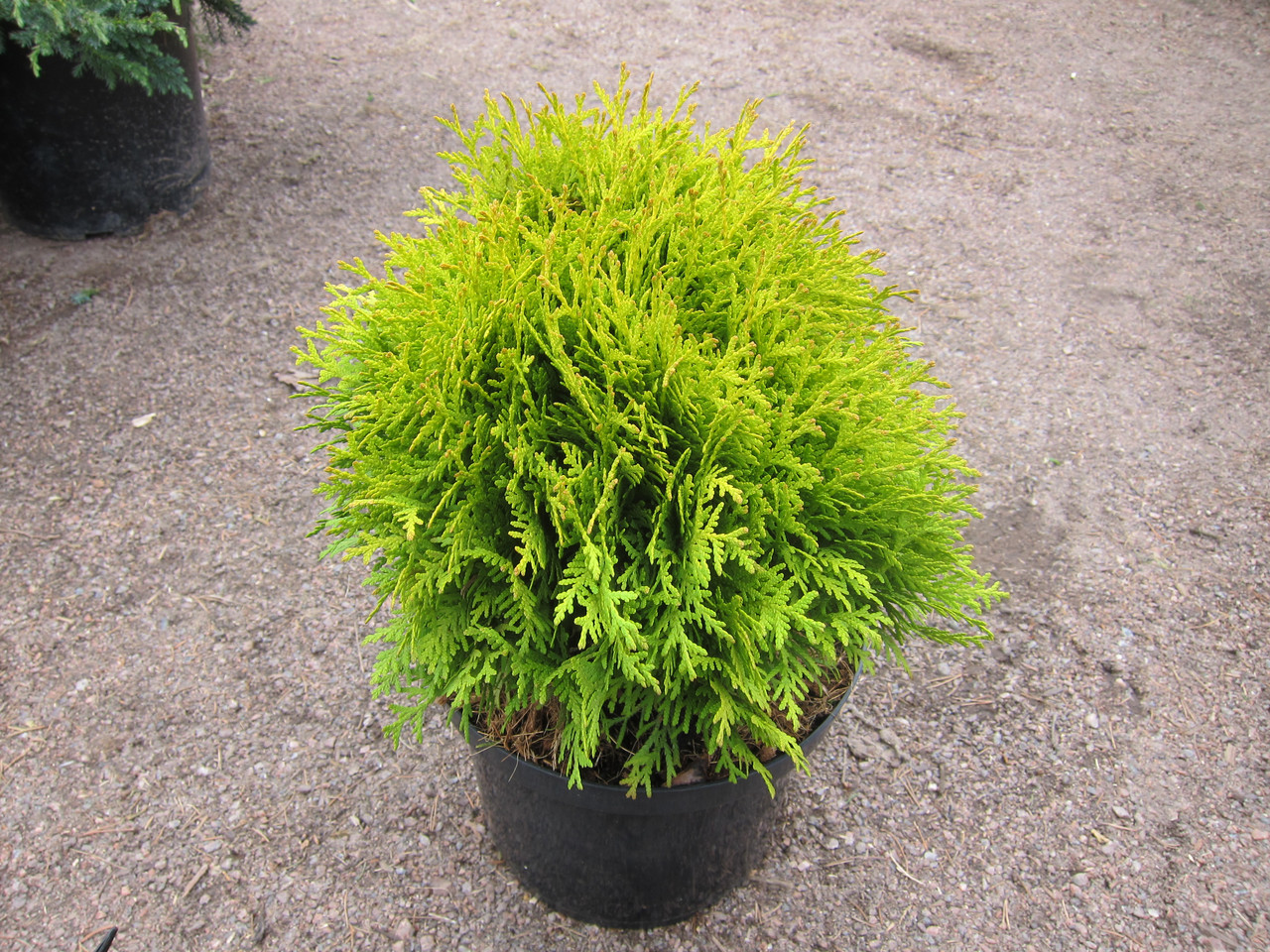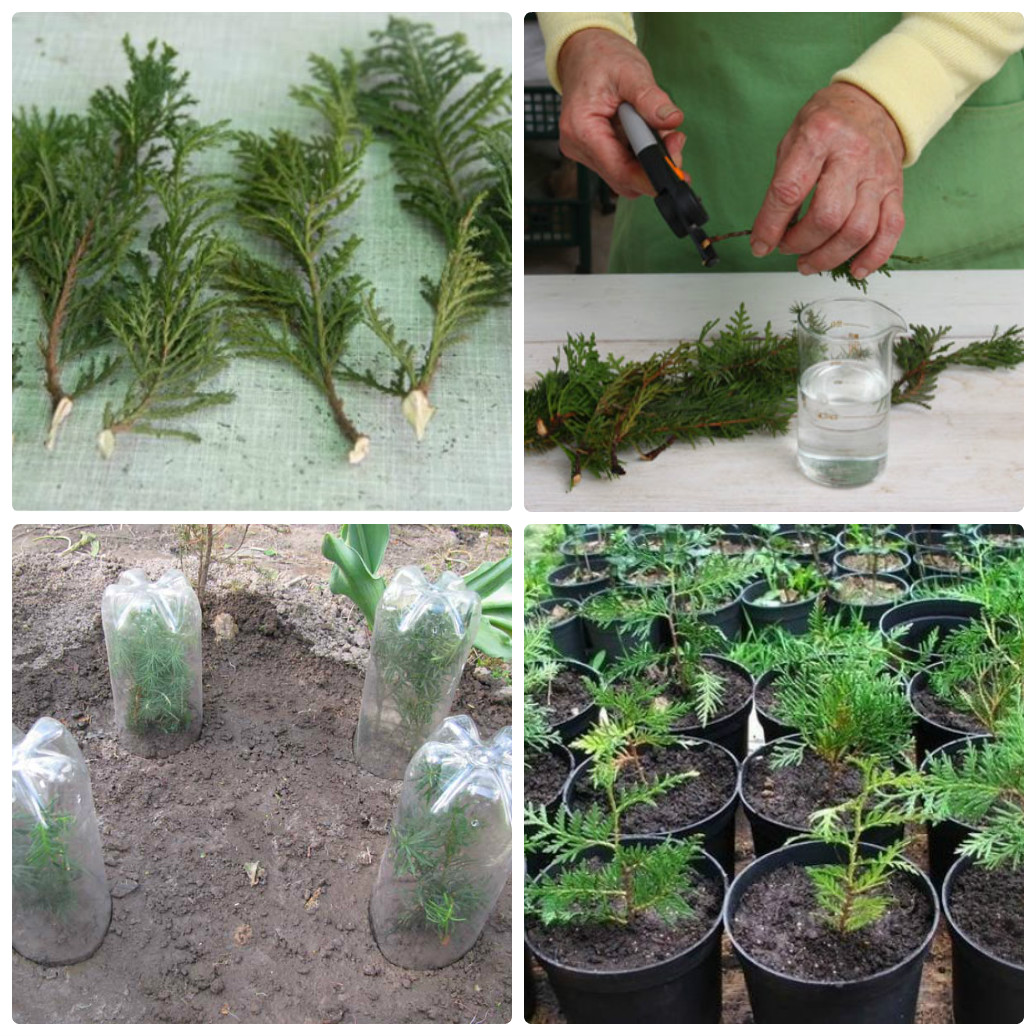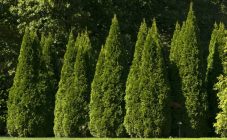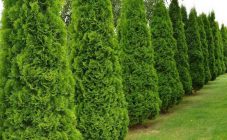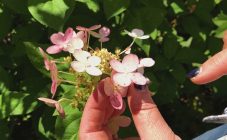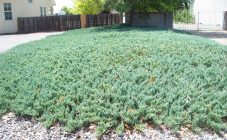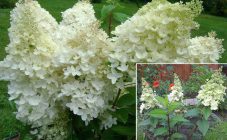Content:
Thuja western Miriam is a new type of coniferous culture. It appeared as a result of a mutation of the famous Danica variety. Ephedra is widespread in Europe.
Description of Tui Miriam
It is an evergreen dwarf spherical shrub. Its diameter, height 80 x 80 cm, grows slowly. The annual growth of shoots is 5-10 cm.
The needles are thin, dense, vertical, scaly. In summer it is golden-green, in winter it becomes greenish-orange and has a bronze tint. In spring, it again acquires a yellow-gold color.
Main characteristics:
- Thuya Miriam prefers a sunny open place, but light partial shade is allowed. It must be protected from the winds. In the shade, the plant does not develop well, the crown becomes loose, the needles fade.
- For ephedra, fertile, loose, breathable, drained, moderately moist, acidic (not swampy) soil is best suited. The acidity level is pH 4.5-5.5. Although the bush is considered unpretentious, it tolerates dry or excessive soil moisture well. Thuja are seated at a distance of 0.5-0.6 m from each other.
- The plant is characterized by good winter hardiness. Suitable for 4 climatic zones with temperatures down to -34 ° C.
Thuja planting
It is preferable to plant thuja in spring, in May. It is possible in the fall, in September. Suitable land - peaty, clayey, dry sandy loam. Prepare the soil in advance. It should include:
- turf / leafy land (2 parts);
- peat (1 part);
- sand (1 part).
A complex of mineral fertilizers (5 g per 1 liter of soil) or nitroammofoska (100 g per 1 adult plant) is added.
Dig a planting pit in advance, preferably 2 weeks before the start of work. Its depth should be 60-80 cm, and its volume so that a lump of earth with roots can fit freely. Next, a sapling is set in the middle of the hole, sprinkled with prepared earth, tamped, watered. The trunk circle is mulched with peat, wood chips.
Further care
During the first month after the thuja has been planted, it is watered once every 7 days. Take 1 bucket of water for 1 bush. In hot weather, irrigate the plant at least 2 times a week, pouring in 2 buckets of water. Sprinkling is also carried out. In subsequent years, if the weather is dry, watered once a week. To maintain moisture in the soil, the trunk zone is mulched with bark, peat, dry compost. It is very useful to spray the plant with a stimulating solution, for example, epin, 1 ampoule per 5 liters of water, zircon, 1 ml per 1 bucket of water.
In the spring (from April to May), the bushes are fed. Any complex fertilizer is used. Suitable nitroammofoska (30-40 g per 1 m²), Kemira-wagon (50-60 g per 1 m²). In autumn, in October, they are fed with potassium substances.
During the growing season, weeds are weeded, loosened to a depth of 5-8 cm, and the near-trunk zone is mulched every time after watering.
In the spring, make the necessary pruning. Sick, frozen, damaged branches are removed. Give shape to the crown.
For the winter, the soil is mulched with mown grass, bark, peat. The conifers are pulled together with a ribbon, twine, and wrapped with spruce branches. Covering material is also used, such as a film. This will protect the plant from wet snow, as well as from the scorching spring sun.
Diseases and pests
Thuja occidentalis Mirjam has good immunity. Occasionally, it is affected by harmful insects or ailments.
- Fungal diseases (fusarium, brown shute). Their appearance can be observed in early spring. Scales of needles turn yellow, shoots become brown, disappear. In this case, you need to remove all damaged fragments of the bushes, and pour lime into the near-stem circles. Fungicides (HOM, topsin) are also used. In the spring in April, a preventive treatment with Bordeaux liquid (1%) is carried out. In the summer, use the drug foundationol.
- Thuvaya false shield. Its appearance is indicated by the formed spots on the plants, as well as the loss of decorativeness. In this case, thuja is sprayed with karbofos or actellik. They are processed twice with an interval of 7-10 days.
- Aphid. Karbofos is used if there is a mass accumulation of insects. Decis substance will quickly destroy pests.
Reproduction of thuja
Thuja Miriam reproduces in several ways:
- seeds;
- cuttings;
- layering;
- twigs.
The seed method is used mainly by breeders. Ordinary gardeners can use cuttings. Sequencing:
- Planting material is harvested in the summer, in July - August. Semi-lignified petioles are cut or abruptly torn off so that their length is 30-40 cm, and young shoots are at least 15-20 cm. Pieces of bark should remain on them - heels. Such specimens take root well.
- The lower leaves are removed from the cuttings. The ends of the shoots are immersed in a wet mixture of, for example, sand and peat in a 1: 1 ratio. Before they are soaked in a growth stimulator (epine, root).
- Petioles are planted with an inclination of 60 °, deepening the tips by 2-3 cm, and covered with a film. The comfortable temperature for rooting is 23 ° C. Propagated by twigs in the same way.
- The seedlings are periodically ventilated, the earth is moistened with water from a spray bottle. In autumn, young shoots are covered with plastic wrap, spruce branches.
- In the spring and autumn periods, adult thuja at the age of 5-7 years are transplanted.
Thuja Miriam in landscape design
Thuja Miriam looks great in single plantings, group compositions with other plants. It is grown in gardens, parks, squares, Japanese gardens, alpine slides, summer cottages. Thuja are planted in containers, they form living curbs, hedges. Various garden decor items are placed next to the green balls of plants.
Tuya Mirjam is an unpretentious culture. She won the love of many professional landscape designers and ordinary summer residents.
